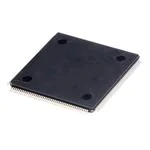TMS320F28335ZJZQCR
Part Number: TMS320F28335ZJZQCR
Manufacturer: Texas Instruments
Description: Digital Signal Processor (DSP)
Shipped from: Shenzhen/HK Warehouse
Stock Available: Check with us
ICRFQ.com - Electronic Components Distributor in China Since 2003

Part Number: TMS320F28335ZJZQCR
Manufacturer: Texas Instruments
Description: Digital Signal Processor (DSP)
Shipped from: Shenzhen/HK Warehouse
Stock Available: Check with us
The Texas Instruments TMS320F28335ZJZQCR microcontroller is a dynamic mix of DSP (Digital Signal Processor) and DSC (Digital Signal Controller) functions. Its combination of processing power and advanced peripherals makes it a flexible choice for real-time signal processing and accurate control in applications like motor control, power electronics, and more. This guide looks at the TMS320F28335ZJZQCR’s architecture, peripherals, programming methods, and real-world applications. This will give you a complete plan for using the TMS320F28335ZJZQCR to its full potential in digital signal processing and control.
The TMS320F28335ZJZQCR microcontroller is a top-of-the-line product from Texas Instruments. It has a mix of cutting-edge features and strong specifications that make it perfect for digital signal processing (DSP) and control apps that require a lot of power.
Real-Time Control: The TMS320F28335ZJZQCR is excellent for real-time control applications, like motor control, that require exact timing and quick response.
The TMS320F28335ZJZQCR finds its niche in a multitude of applications, including:
The TMS320F28335ZJZQCR microcontroller has a sophisticated internal architecture that is made for high-performance digital signal processing (DSP) and real-time control jobs. Let’s take a closer look at its most essential parts, such as the central processing unit (CPU), the memory structure, and the most important peripheral modules.
The TMS320F28335ZJZQCR has a fast 32-bit C28x CPU core at its core. This core has both DSP and efficient control processing built in, so it can handle both complicated algorithms and quick control tasks well. The CPU is made so that efficient math operations and data manipulation are its top priorities. This lets signal processing methods run smoothly.
The memory hierarchy of the microcontroller is well set up to hold program code, data, and essential factors.
The TMS320F28335ZJZQCR has a variety of peripheral units that improve its ability to control and process signals in real-time:
The high-resolution ADC module lets analog data from sensors or other sources be picked up with great accuracy. It is a must-have for sampling and digitizing real-world signals correctly.
Enhanced PWM modules let the microcontroller make exact pulse-width modulated signals. This makes it perfect for controlling motors, regulating power, and other tasks that need outputs with different voltages or currents.
Programmable timers let you set exact times for different jobs. They can be used to make timed interruptions, synchronize events, and do other things.
The microcontroller has a number of communication interfaces, such as UART (Universal Asynchronous Receiver-Transmitter), SPI (Serial Peripheral Interface), I2C (Inter-Integrated Circuit), and CAN (Controller Area Network). These connections make it easy for devices, sensors, and other systems to connect and talk to each other.
Specialized modules like ePWM (Enhanced PWM), eCAP (Enhanced Capture), and eQEP (Enhanced Quadrature Encoder Pulse) offer advanced control and feedback capabilities, making them essential for motor control and other similar uses.
The way these parts are connected in the microcontroller’s design makes for a synergistic environment that makes it easy to run signal processing algorithms, make precise control loops, and connect to other devices.
The TMS320F28335ZJZQCR microcontroller comes with a wide range of peripheral modules that increase its flexibility and fit for a wide range of real-time control and digital signal processing applications. Let’s learn more about these important secondary modules:
The high-resolution ADC module enables the precise conversion of analog signals into digital data. Key features include:
The PWM module facilitates the generation of precise digital pulse-width modulated signals. This module is invaluable for applications requiring accurate control of voltage or current outputs, such as motor control and power regulation.
The microcontroller incorporates versatile timer modules, including the enhanced PWM (ePWM) submodule, which adds advanced capabilities to traditional PWM. Key features include:
The enhanced capture module, eCAP, is tailored for capturing and processing external event signals. It is beneficial for applications involving precise timing and synchronization.
The eQEP module is designed for interfacing with quadrature encoders in motion control systems. It facilitates precise position and speed measurement.
In summary, the TMS320F28335ZJZQCR unequivocally asserts its dominance in the domain of digital signal processing and control, serving as the catalyst that turns visionary ideals into palpable achievements. A symphony of rugged architecture, versatile peripherals, and unparalleled performance harmoniously converges, ushering in a new epoch of technological progression.
As such, the TMS320F28335ZJZQCR takes its place as an indispensable implement within the toolkit of contemporary engineers and innovators. Immerse yourself in the transformative potential of the TMS320F28335ZJZQCR, seamlessly realized through a dynamic partnership with ICRFQ, your esteemed electronic components distributor based in China.
WhatsApp us